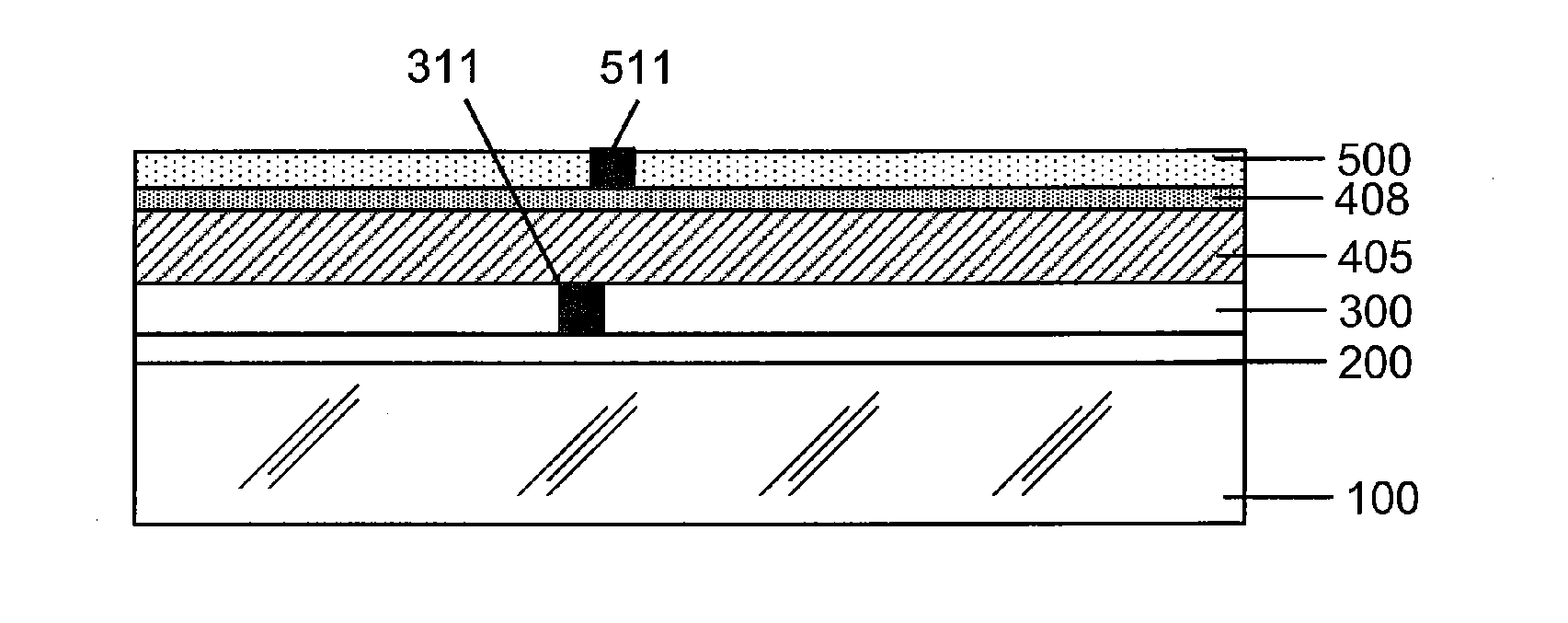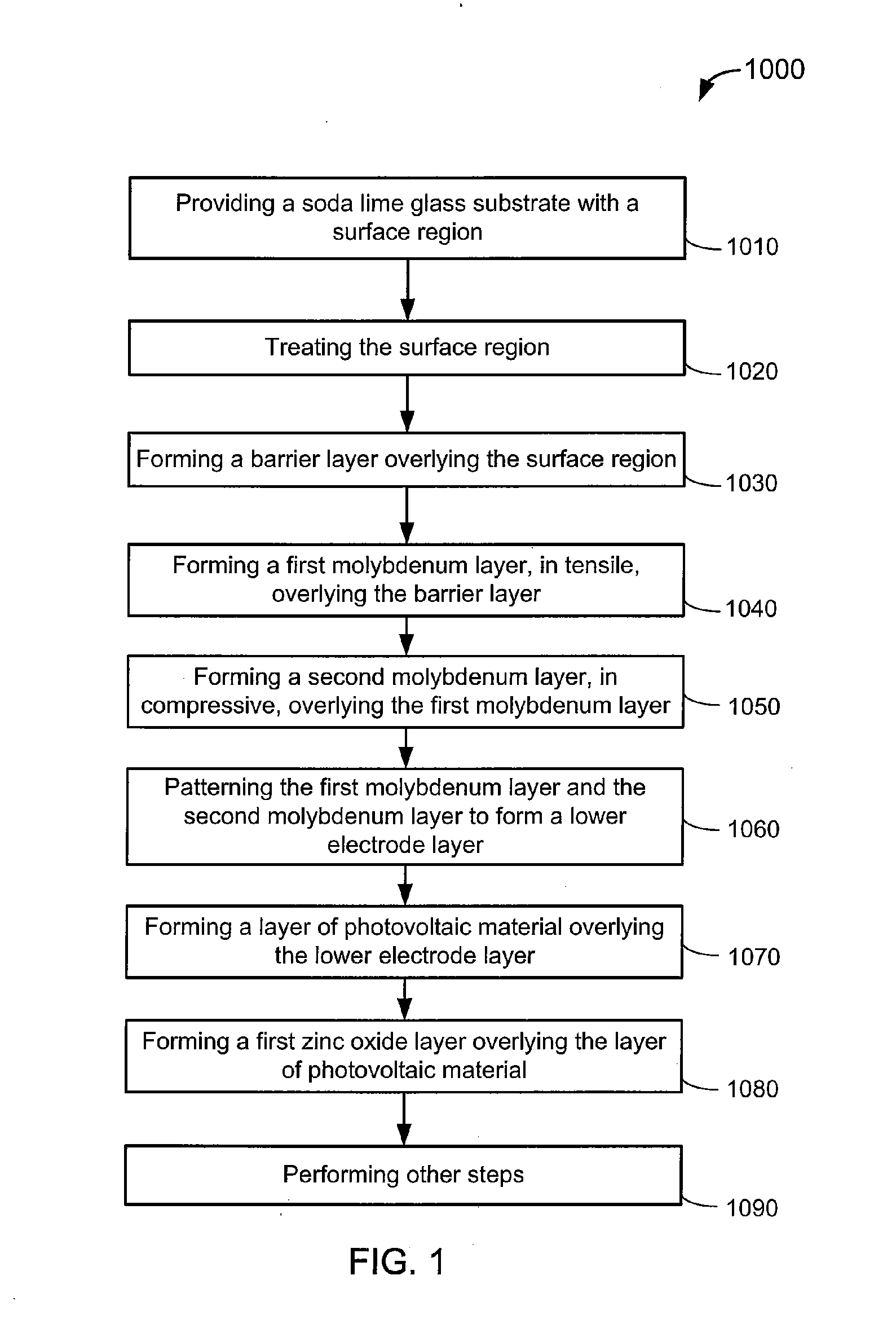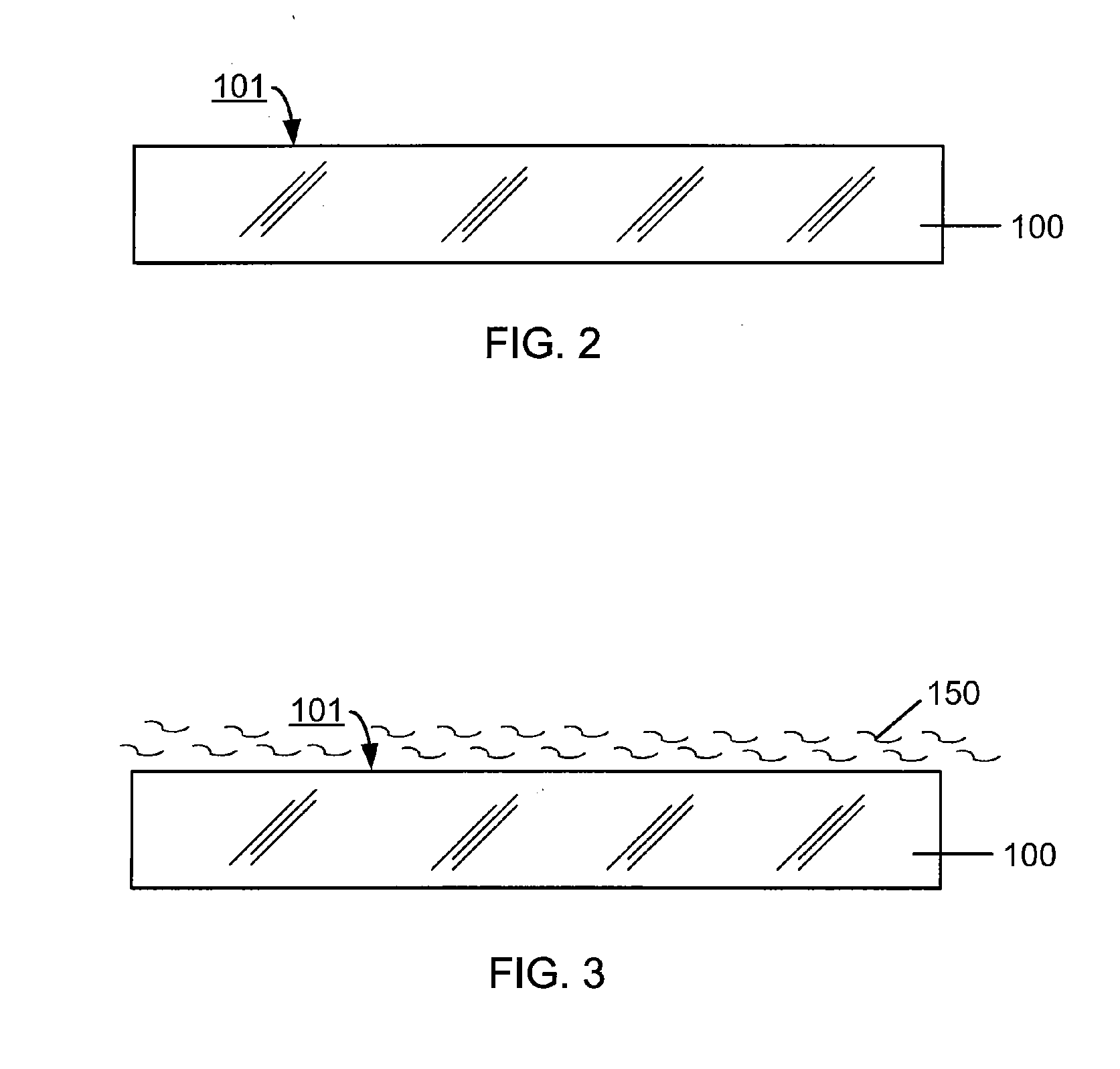Thin film sodium species barrier method and structure for cigs based thin film photovoltaic cell
a technology of sodium species and thin film, applied in the direction of semiconductor/solid-state device manufacturing, electrical equipment, semiconductors, etc., can solve the problems of reducing the efficiency of thin film solar cells, and reducing the supply of petrochemical fuel. , to achieve the effect of large grain size and high efficiency
- Summary
- Abstract
- Description
- Claims
- Application Information
AI Technical Summary
Benefits of technology
Problems solved by technology
Method used
Image
Examples
Embodiment Construction
[0018]The present invention relates generally to photovoltaic materials and manufacturing method. More particularly, the present invention provides a method and structure for fabricating thin film solar cells. Merely by way of example, the present method and structure for manufacture of copper indium gallium diselenide based thin film photovoltaic devices, but it would be recognized that the invention may have other configurations.
[0019]FIG. 1 is a simplified flowchart illustrating a method of fabricating a thin film solar cell according to an embodiment of the present invention. This diagram is merely an example, which should not unduly limit the scope of the claims herein. The method 1000 includes the following processes:[0020]1. Process 1010 for providing a soda lime glass substrate with a surface region;[0021]2. Process 1020 for treating the surface region;[0022]3. Process 1030 for forming a barrier layer overlying the surface region;[0023]4. Process 1040 for forming a first mol...
PUM
| Property | Measurement | Unit |
|---|---|---|
| particles size | aaaaa | aaaaa |
| pressure | aaaaa | aaaaa |
| pressure | aaaaa | aaaaa |
Abstract
Description
Claims
Application Information
 Login to View More
Login to View More - R&D
- Intellectual Property
- Life Sciences
- Materials
- Tech Scout
- Unparalleled Data Quality
- Higher Quality Content
- 60% Fewer Hallucinations
Browse by: Latest US Patents, China's latest patents, Technical Efficacy Thesaurus, Application Domain, Technology Topic, Popular Technical Reports.
© 2025 PatSnap. All rights reserved.Legal|Privacy policy|Modern Slavery Act Transparency Statement|Sitemap|About US| Contact US: help@patsnap.com



